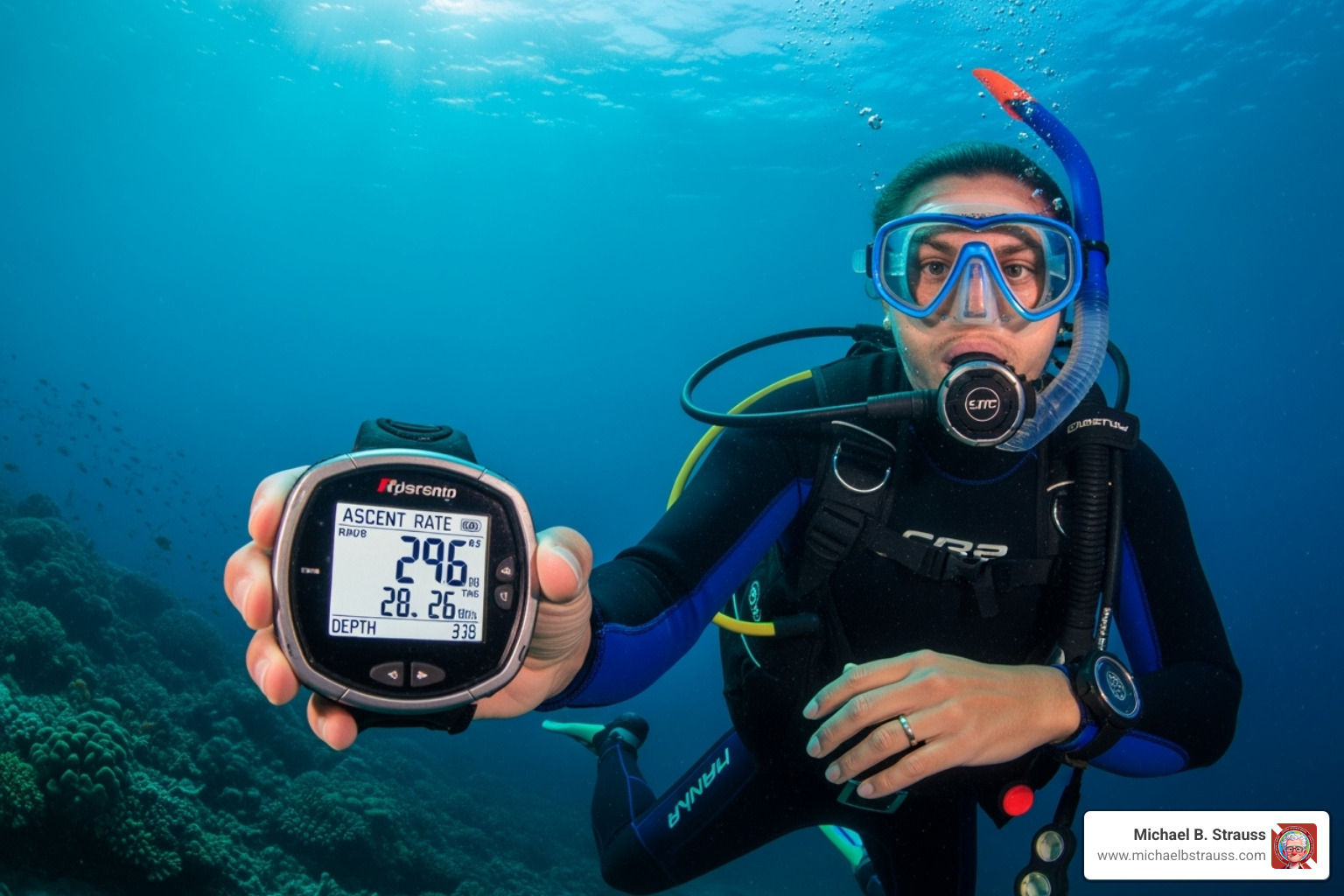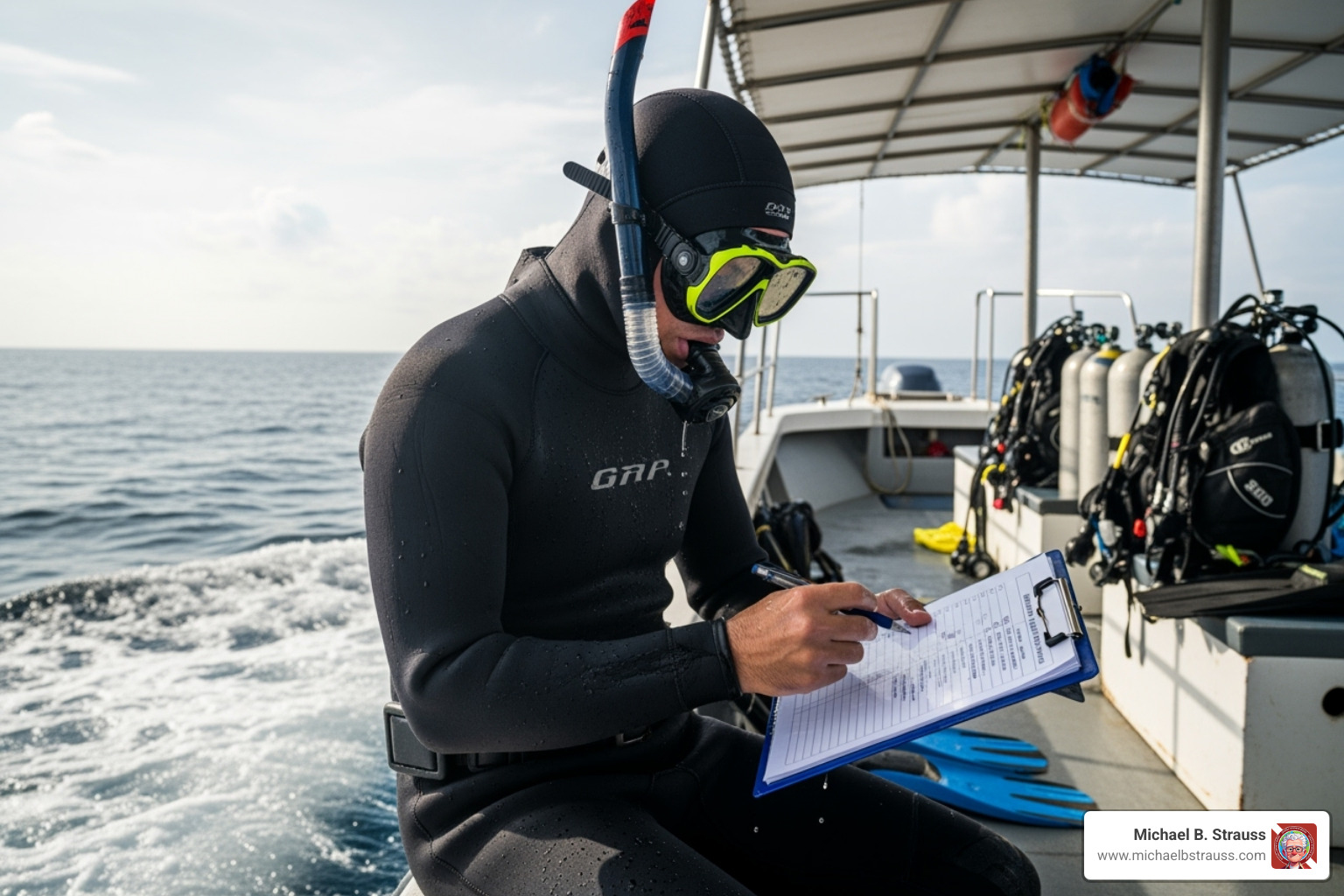Why Standard Insurance Might Leave You High and Dry
Dive insurance cost ranges from as little as $15 for short-term student coverage to around $150 annually for comprehensive plans. Here's what you need to know about dive insurance pricing:
Basic Coverage: $15-$60 annually
- Student/intro plans: $15-$25
- Basic annual plans: $40-$60
- Coverage limits: $15,000-$50,000
Mid-Tier Coverage: $60-$100 annually
- Standard plans: $54-$75
- Improved coverage: $75-$95
- Coverage limits: $100,000-$250,000
Premium Coverage: $100-$150 annually
- Comprehensive plans: $99-$135
- Professional liability add-ons available
- Coverage limits: $250,000-$500,000+
Many divers assume their standard health or travel insurance will cover them if something goes wrong underwater. Unfortunately, this is a common misconception that can lead to significant financial distress, as emergency evacuation and hyperbaric chamber treatment costs can range from $15,000 to $500,000 per incident.
Standard travel insurance often excludes diving activities or imposes strict depth restrictions. Most policies won't cover specialized hyperbaric treatments, emergency evacuations from remote dive sites, or diving equipment damage. Even when they do provide some coverage, travel insurers lack the specialized knowledge of dive medicine that dedicated dive insurance providers offer.

Prioritizing safety is crucial for every dive. Dr. Michael B. Strauss, a renowned expert in diving safety, offers invaluable insights in his comprehensive diving books, which are essential reads for both novices and experienced divers. Understanding the dive insurance cost is a key part of that safety-first mindset; it's an investment in your peace of mind.
The Gap Between Travel Insurance and Dive-Specific Coverage
Standard travel insurance policies were not designed for the unique risks of scuba diving. They frequently exclude "adventure" sports like diving or impose strict depth limits (e.g., 18 meters/60 feet) that void coverage. Advanced activities like wreck, cave, or technical diving are almost universally excluded.
A critical difference is specialized medical expertise. Dedicated dive insurers provide 24/7 emergency hotlines staffed by dive medical experts with access to hyperbaric chambers worldwide. Standard insurers lack this network and understanding of conditions like decompression sickness (DCS). For more on the science, see More info about Decompression Science.
Hyperbaric chamber treatments, the primary care for DCS, are extremely expensive and rarely covered by standard policies. Furthermore, your dive gear represents a significant investment, yet travel insurance offers minimal coverage for lost or damaged baggage, and almost never covers damage that occurs during a dive. Finally, dedicated dive insurers excel at managing complex evacuations from remote sites, a logistical challenge general insurers are ill-equipped to handle.
The Unseen Price Tag of a Diving Mishap
The financial fallout from a diving accident without proper insurance can be catastrophic. While decompression illness (DCI) is rare—occurring in 1-2 cases per 10,000 dives—the costs are devastating when it happens. You can learn more about Why and at What Sites Decompression Sickness Can Occur.
Consider the potential costs. An emergency evacuation from a remote location can run from $9,000 to $50,000. Once at a facility, hyperbaric chamber treatments can cost thousands of dollars per session, with multiple sessions often required. Add in search and rescue operations ($10,000-$100,000+) and international hospital stays ($1,000-$5,000 per day), and the bills become astronomical.
Real-world accident costs for diving incidents range from $15,000 to a staggering $500,000. A case of temporary paralysis in the Caribbean resulted in over $22,000 in medical expenses. The story of an uninsured diver who suffered severe DCS and had to crowdfund his repatriation starkly illustrates the financial ruin that can occur. The modest dive insurance cost is a wise investment against such possibilities.
Decoding Your Dive Insurance Cost

Choosing the right dive insurance requires understanding what goes into the final dive insurance cost. It’s about finding the sweet spot between comprehensive protection and what fits your diving lifestyle, much like selecting the right dive computer.
Factors That Influence Your Dive Insurance Cost
Your dive insurance cost is determined by several key factors that assess risk and your required level of protection:
- Coverage limits: Higher maximum payouts for medical, evacuation, and hyperbaric treatments mean higher costs, but they are essential given the high potential cost of an accident.
- Policy duration: Short-term policies are great for a single trip, but annual coverage offers better value for regular divers.
- Age: As with other insurance, age can influence pricing based on risk assessment.
- Geographic coverage: Worldwide coverage costs more than regional plans. Always check that your intended destinations are covered.
- Technical diving: Expect higher costs for activities like rebreather, mixed gas, or deep diving, which require specialized endorsements.
- Family and student plans: Discounts are often available for families and students, making it more affordable to get proper protection.
Comparing Coverage Tiers and Their Associated Dive Insurance Cost
Dive insurance is typically offered in three tiers, allowing you to match coverage to your needs and budget.
Basic plans are an entry point for recreational divers on a budget. They cover essentials like emergency evacuation and hyperbaric treatments but with lower coverage limits, suitable for occasional divers in accessible locations.
Mid-tier plans offer a significant step up, with much higher coverage limits for medical and evacuation expenses. They often include extra benefits like non-diving accident coverage, making them a great balance of protection and cost for active, traveling divers.
Premium plans provide the most comprehensive protection, with coverage limits reaching $500,000 or more. These are designed for serious divers and professionals, often bundling extensive travel benefits like trip cancellation, lost equipment protection, and professional liability coverage.
When comparing plans, note the difference between per-occurrence limits (payout for a single incident) and lifetime limits. Also, check for any deductibles, though they are less common in dive-specific policies. The key is to match the tier to your personal diving habits and risk tolerance.
Special Considerations: Technical Diving and Pre-existing Conditions
Advanced diving activities come with unique risks that standard policies may not cover.
Technical diving coverage is essential if you engage in deep diving, cave diving, wreck penetration, or use advanced breathing gases. Standard policies often exclude these activities, so you'll need a policy or endorsement that explicitly includes them. This includes rebreather diving, which has different failure modes, and mixed gas diving (e.g., trimix), which requires specialized coverage beyond standard nitrox. Understanding the medical side of these activities is crucial; resources like Evaluation and Management of Pain-Related Medical Problems of Diving can provide deeper insight.
Pre-existing medical conditions can affect your eligibility and dive insurance cost. Insurers handle these differently; some may require medical clearance, charge additional premiums, or exclude the condition entirely. It is absolutely crucial to be honest when applying. Failure to disclose a relevant condition could void your policy when you need it most.
Policy riders and endorsements let you customize your plan for specific needs, such as equipment liability for professionals. While they add to the cost, they ensure your coverage matches your actual diving profile. As your diving becomes more sophisticated, your insurance should evolve too.
Making the Right Choice: A Diver's Checklist

Before you take that giant stride, running through a final policy checklist ensures you have the right protection. Selecting a policy doesn't have to be complicated; with the right approach, you can confidently choose coverage that lets you focus on the adventure.
Your Pre-Purchase Policy Checklist
Think of this as your pre-dive safety check for insurance. Ask these questions before you buy:
What are the coverage limits for medical expenses and evacuation? Look for substantial limits (ideally hundreds of thousands of dollars) to cover worst-case scenarios.
What are the exclusions? Check for any restrictions related to depth, gas mixtures (nitrox, trimix), and geographic locations. Ensure your planned dives are covered.
Is it primary or secondary coverage? Primary coverage pays first, which is often simpler and faster for dive-specific emergencies. Secondary coverage only pays after your other health insurance.
Is there a 24/7 emergency hotline with dive medical experts? This is a lifesaver. You need immediate access to specialists who understand dive medicine, not a generic call center.
How does the claims process work? Look for clarity and direct payment options to avoid paying huge sums out-of-pocket during an emergency.
What are the benefits of dive safety organizations? Insurers affiliated with these organizations often have extensive experience and networks dedicated to diver safety.
Does it cover non-diving and travel issues? Comprehensive plans may include trip cancellation, lost baggage, or lost diving days, which can be valuable for frequent travelers.
How are pre-existing conditions and deductibles handled? Be clear on these details to avoid surprises later.
Conclusion: Dive Confidently with the Right Protection
The small investment in dive insurance provides immense peace of mind against potentially catastrophic financial burdens. When emergency costs can run from $15,000 to $500,000, an annual dive insurance cost of $40 to $150 is a clear and logical choice.
Standard insurance leaves dangerous gaps, but by understanding the factors that influence cost and carefully comparing your options, you can select a plan that protects your financial well-being. Dive insurance isn't about expecting the worst; it's about being prepared, allowing you to focus on the wonders of the underwater world.
By investing in proper dive insurance, you are preserving your ability to continue exploring for years to come. For more expert insights on dive safety and to deepen your understanding of diving science, get your copy of the essential book, Diving Science Revisited.
Get your copy of Diving Science Revisited today!
DISCLAIMER: Articles are for "EDUCATIONAL PURPOSES ONLY", not to be considered advice or recommendations.






